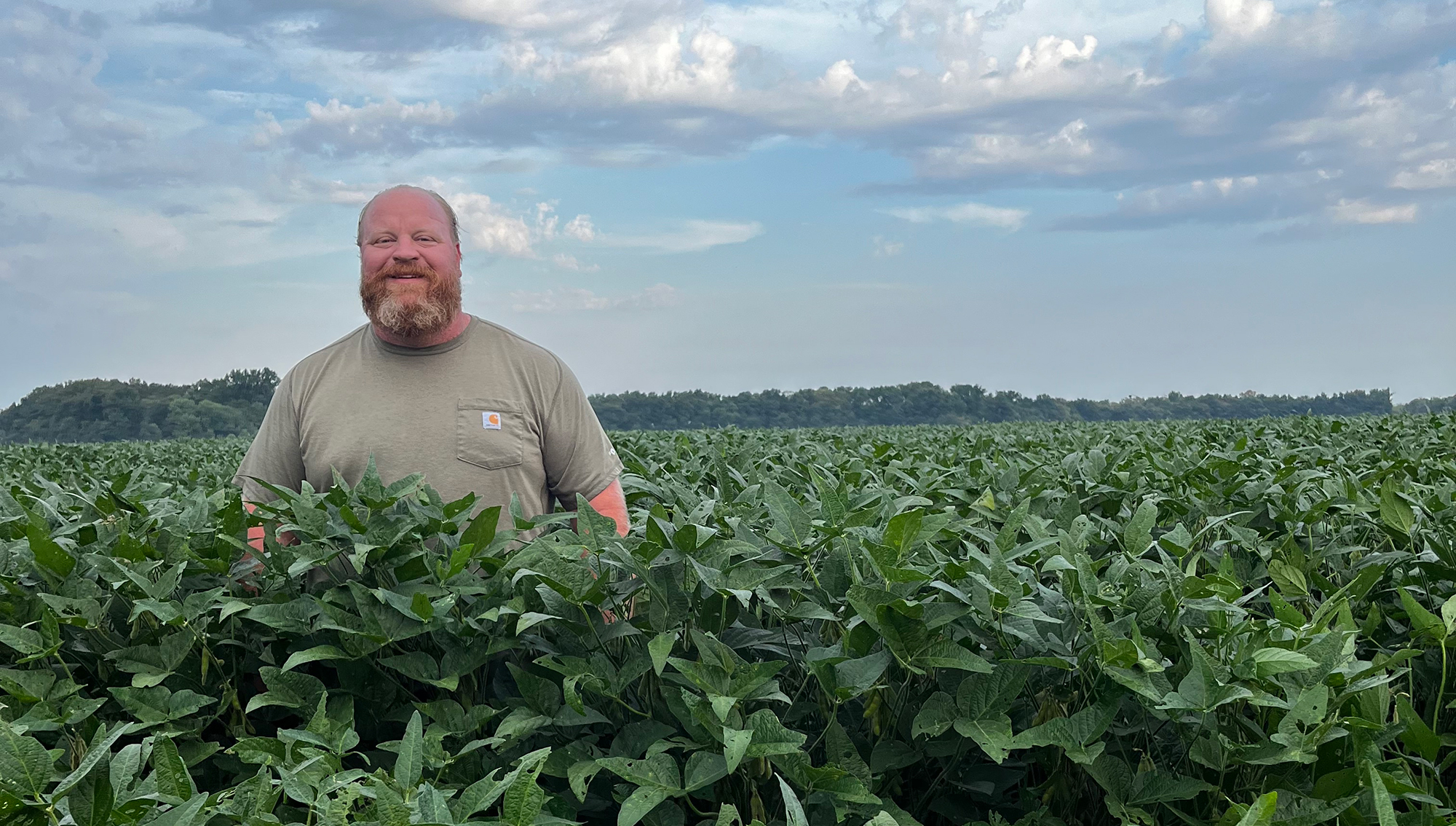Adam Chappell planted non-GMO soybeans for 15 years. He appreciated the premium prices he earned growing feed-grade non-GMO soybeans.
“I was getting a little more than $2.00 above Chicago Board of Trade prices (for soybeans),” says Chappell, who farms 2000 acres in Cotton Plant, Arkansas. “It was a really good deal, and I could do it.”
The cost for non-GMO seeds is also much less than for GMO seeds.
Chappell uses regenerative farming practices such as cover crops and minimum tillage to build soil health. Such practices have helped him reduce the use of herbicides and nitrogen fertilizers.
“I can’t grow anything else”
But Chappell can’t grow non-GMO soybeans anymore. That’s because other farmers in his area are growing GMO soybeans that are tolerant to dicamba herbicide. The controversial weedkiller is prone to drift—turning from a liquid to a gas when sprayed, drifting across other farm fields, and killing other crops including Chappell’s non-GMO soybeans.
“I can’t grow non-GMO soybeans anymore, and it’s a shame because it’s knocked me completely out of my non-GMO markets,” he says.
Instead, Chappell has been forced to grow GMO dicamba tolerant soybeans—just to protect his farm. For the past four or five years, Chappell’s non-GMO soybeans have been increasingly damaged by dicamba drift from neighboring farms.
“All I grow is dicamba tolerant soybeans. I can’t grow anything else,” he says. “Anybody that doesn’t grow dicamba tolerant soybeans has that problem.”
“Tantamount to extortion”
Forcing farmers like Adam Chappell to buy dicamba tolerant GMO soybeans seeds was part of Monsanto/Bayer’s and BASF’s marketing plan.
In 2020 the Midwest Center conducted an extensive investigation and found that Monsanto and BASF released their GMO dicamba tolerant soybeans knowing that the herbicide would cause widespread damage to soybean and cotton crops that weren’t resistant to dicamba. In fact, they used “protection from your neighbors” as a way to sell their seeds.
In 2017, Arkansas farmer Tom Burnham sent a letter to the Arkansas plant board saying he estimated that half the farmers in his area who planted dicamba tolerant crops did so to prevent them from suffering damage, according to a report by the St. Louis Post-Dispatch. “I feel the need to plant a technology to protect your crop from off-target movement is tantamount to extortion,” he wrote.
“You buy it or else”
The use of dicamba has been controversial since its use was increased starting in 2016 when Monsanto first released dicamba-tolerant GMO cotton and soybean seeds. They released the seeds even though they hadn’t released their dicamba formula. Monsanto also knew that illegal off-label spraying of dicamba would be “rampant.”
As acreage of GMO dicamba-tolerant cotton and soybeans have increased since then—along with applications of dicamba herbicide—so has dicamba drift damage on an unprecedented scale. Millions of acres of soybeans, orchards, vegetable crops, ornamental trees, and gardens have been damaged. Dozens of imperiled species, including pollinators like monarch butterflies and rusty patched bumblebees, are also threatened by the herbicide. A dicamba drift dispute even led one farmer to murder another in Arkansas.
Chappell says more and more farmers in his area grow dicamba tolerant soybeans to protect their farms from drift damage.
“There’s not many people that grow non-dicamba beans anymore because they just can’t manage the injury.”
Bader Farms, the largest peach producer in Missouri, sued Monsanto over dicamba drift damage and won: in 2020, a jury in a U.S. district court ordered Monsanto/Bayer to pay Bayer $15 million in compensatory damages and $250 million in punitive damages. Bader’s attorney Billy Randles said at the time: “This is the first product in American history that literally destroys the competition … You buy it or else.”
The devastation caused by dicamba has led to successful legal action to ban its use. In 2020, a federal court vacated the U.S. Environmental Protection Agency’s dicamba registration, noting that the EPA had failed to examine how “dicamba use would tear the social fabric of farming communities.” Just four months later the EPA reapproved dicamba claiming that new measure would reduce the damage. Then this past February, a federal court vacated the EPA’s 2020 re-approval of dicamba. But in May, Bayer again asked the EPA to re-approve dicamba.
Chappell sees no choice in what he grows because of dicamba drift. “Yes, I’d rather plant non-GMO or whatever I want, but I just can’t,” he says.
Additional sources: Investigate Midwest, St Louis Post-Dispatch





